SKKT Chapter 79
Mid November, 1570.
On September 23rd, Nobunaga left Mitsuhide Akechi and Katsuie Shibata as his retainers and withdrew all the troops deployed in Noda and Fukushima, heading towards the crossing at Eguchi.
Eguchi was an important hub for water transportation in the medieval and modern periods, where boats coming from Kyoto would also embark and disembark.
However, the area near Eguchi, where the tributaries of the Uji River and Yodo River flow in, had strong currents and a high volume of water.
And the crossing at Eguchi was already under the uprising of the Ikko-ikki, with the Ikko-ikki masses gathering on the opposite bank.
“Begin.”
Ashimitsu, to deal with the tense situation, ordered the Ashigaru (light foot soldiers) who were hesitating to fall back to the rear, and deployed 100 stone-throwing soldiers in three units on the shore.
The Ikko-ikki masses were gathered on the opposite bank, armed with bamboo spears.
Naturally, if they were to throw stones here, the effect would be tremendous.
They never even dreamed that the stones would reach them.
After all, in the Sengoku period, it was believed that stone-throwing was only possible by hand.
“Kill.”
With Ashimitsu’s short command, the stones gathered on the shore, 100 in total, flew through the air and attacked the Ikko-ikki masses on the opposite bank.
They, who were not equipped with proper armor, were astonished that the stones had reached the opposite bank.
And they quickly realized that there was no way to defend against the attacking stones.
While the Ikko-ikki masses were in chaos, being attacked one after another by the stones, Nobunaga was the first to ride his horse into the river and ordered the entire army behind him to cross the river.
At this time, Nobunaga had taught his retainers survival techniques for crossing the river, such as taking smaller steps, not crossing sideways, walking in a shuffling manner, positioning their bodies diagonally against the current, and moving diagonally downstream.
“Keep throwing.”
It is difficult to defend against a simple attack where stones are thrown.
If they were to be on the defensive, there would be no means for the Ikko-ikki masses to take.
Some of them, undeterred by the rain of stones, turned the tables and launched a counterattack.
However, for those who were hindered by the water and had reduced mobility, they were easy targets for the archers and cavalry.
As expected, those who charged were shot down by the arrows of the archers and cavalry before they could cross half of the river.
The Ikko-ikki masses, understanding that they had no chance of winning, threw away their weapons and fled.
However, before the Ikko-ikki masses scattered and began to retreat, the Oda army had finished crossing the river.
Even if they discarded their weapons, it didn’t matter to the Oda army.
They launched a surprise attack on the Ikko-ikki masses from the flank.
Unable to find a way to counterattack, the Ikko-ikki masses were annihilated.
With the safety of the opposite bank secured, Ashimitsu and the remaining troops also crossed the river.
They shook off the enemy soldiers pursuing them from behind and Nobunaga returned to Kyoto in just one day.
On the 24th, Nobunaga advanced his troops from Otsu to Sakamoto and headed to Usayama Castle for reinforcement.
The Asai and Asakura allied forces attacking Usayama Castle panicked at Nobunaga’s lightning-fast actions and hurriedly took refuge in Toragasa Castle and Mt.
Hiei.
They understood that if they were to engage in battle with the Oda main army, they would definitely lose.
Without paying any attention to the retreating Asai and Asakura allied forces, Nobunaga immediately entered Usayama Castle.
“Report the current situation.”
“Yes, we managed to stop the advance of the Asai and Asakura allied forces at Sakamoto, but on the 23rd, our camp was annihilated.
After that, the Asai and Asakura allied forces attacked Usayama Castle, burning down Otsu’s Baba, Matsumoto, and Yamashina.”
Shigetuna Aoji, representing the group, answered Nobunaga’s question.
There were also Oda retainer Shingi Oda, and Motomasa Kakimi, the chief retainer of Yoshinari Mori.
However, the lord of Usayama Castle, Yoshinari Mori, was not present.
Perceptive Nobunaga instantly understood everything.
Nevertheless, he voiced a question, still holding onto a glimmer of hope.
“Where is Yoshinari?”
In response to those words, the retainers of Yoshinari Mori silently assembled his armor in front of Nobunaga.
Seeing the blood-stained armor, Nobunaga couldn’t help but understand what had happened to Yoshinari Mori.
“Fool.
Who ordered you to risk your life?”
Nobunaga muttered in a voice filled with grief.
In fact, he had even ordered Yoshinari Mori to “abandon Usayama Castle in the worst case scenario.” The castle could be rebuilt, lost territories could be regained, but Yoshinari Mori was an irreplaceable person.
While tightly clenching his fist, Nobunaga calmly moved in front of Yoshinari Mori’s armor.
After gazing at the armor while kneeling, Nobunaga placed his hand on the shoulder of the armor and spoke in a voice that seemed to be squeezing out his words.
“It was a great feat.”
Upon hearing Nobunaga’s words, all the retainers of Yoshinari Mori shed tears.
Nagayoshi was in turmoil.
It could be said that his state was like a typhoon.
He would disappear for a while, then return to the castle after capturing warrior monks or scouts from the allied forces, subjecting them to interrogation, which was more like torture.
However, it seemed as if he was venting his frustration on the enemy.
“You…fool…fear…not…Buddha…punishment…will…come…”
“Then bring Buddha here.
Hey, what’s wrong? Show me what you can do, you damn stinking monks!”
The face of the warrior monk was contorted.
Not only his face, but his arms and legs were also bent in unnatural directions, and several of his fingers were severed.
Nagayoshi struck the warrior monk with all his might with the mace in his hand.
The warrior monk, who had completely lost consciousness from Nagayoshi’s blow, did not hesitate to strike back with his remaining hand.
“Show me the power of Buddha! Come on, say something, you stinking monks!!”
“Stop.
He’s already dead.”
Keiji stopped Nagayoshi’s rampage.
However, his expression was not his usual cheerful one, but filled with deep sorrow.
“Damn it!”
Nagayoshi kicked the corpse of the warrior monk.
Bodily fluids splattered around, and the area around the two of them was in a gruesome state.
However, no one paid any attention.
No, they didn’t have the luxury to care.
Until now, they had been desperately focused on defense, so they didn’t have to think about such things.
However, now that the Oda main army had joined them, they had plenty of time to think.
“In the end…in the end, I couldn’t catch up to my father.
What was the point of training so desperately until now? I obtained power to change this kind of situation…”
“Don’t look back, Katsuzo (Mori Nagayoshi).
Look ahead, especially in difficult times.
And don’t deny the path you have walked.”
Keiji lightly tapped Nagayoshi’s chest and finally regained his usual cheerful smile as he continued speaking.
“War is unreasonable and absurd.
So fight as you like and die in absurdity.”
“…Hmph, I’m not ready to die yet.
I’ll become stronger and surpass my father’s back.”
Nagayoshi, who was gradually returning to his usual self, cursed at Keiji.
If there weren’t the gruesome corpses of the warrior monks around them, it would look like a scene from a war movie.
However, unfortunately, the area around them was covered in blood and entrails.
“By the way, what about Shizuchi?”
Keiji, trying to change the atmosphere, brought up a different topic to Nagayoshi.
“She feels responsible for letting our father die, so she’s been working non-stop since morning.”
“…That’s not good.”
“Yeah, it’s not her fault.
Our father had suffered serious injuries…no matter who examined him, he wouldn’t have been saved.”
Nagayoshi let out a heavy sigh.
The two of them felt that Shizuko was the most dangerous right now.
If the situation continued like this, she would eventually collapse.
However, Shizuko couldn’t hear anyone’s voice.
“Everyone understands.
With that wound, it would truly be a miracle if he survived.”
Still, Nagayoshi couldn’t help but hold onto a glimmer of hope.
He had a faint hope that Shizuko would somehow find a way.
But when he saw Yoshinari Mori’s lifeless body, he realized that it was an empty wish.
(Father…I’m sorry)
Overwhelmed by his own powerlessness, Nagayoshi apologized to Yoshinari Mori in his heart.
A few days after the Oda main army entered the grief-stricken Usayama Castle, Nobunaga summoned the monks of Enryakuji Temple.
The grief of having their lord killed turned into anger, and the monks of Enryakuji Temple were exposed to a curse-like anger.
However, they firmly believed that the Oda army could not lay a hand on them.
Therefore, no matter how much hostility was directed at them, they looked down on the Oda army as a group that couldn’t do anything.
Nobunaga, who called Enryakuji Temple, bluntly told them:
“Return the mountain gate territory.
In return, remain neutral and refrain from getting involved in the battles of the samurai.
Or would you prefer everything to turn to ashes?”
The monks, momentarily intimidated by Nobunaga’s strong threat, quickly regained their composure.
Mt.
Hiei was a sacred place ruled by the Buddha, and at the same time, a sanctuary.
The monks of Enryakuji Temple, who were there, always believed that they were under the protection of the Buddha.
Enryakuji Temple had been burned down twice in the past, but those who did it had all met their end betrayed by their retainers.
This was the reason why they were convinced of the Buddha’s protection.
“…?”
The monk who had been listening to Nobunaga’s words noticed that there was occasionally a dragging sound.
The sound of something heavy being dragged mixed with the sound of something watery dripping, creating an unpleasant noise.
However, neither Nobunaga nor the people around him showed any reaction to the sound.
The sound of something being dragged gradually approached them.
Even so, Nobunaga continued to speak without any reaction, endlessly criticizing the response of Enryakuji Temple.
Eventually, the source of the sound stopped in front of the room where the monks were.
The monk, who was puzzled by what was happening, heard the sound of the entrance being quietly opened.
“What the!? Ah, aaaaaahhhhhhhhhhh!!”
One of the monks who was curious turned around and screamed in astonishment at the sight before him.
The other monks also turned around, curious about what was behind them, and screamed in shock, just like the first monk.
They were shocked because an unbelievable person was standing at the entrance.
In their line of sight was Yoshinari Mori in armor.
Covered in dirt all over his body, with arrows sticking out here and there, and blood dripping incessantly onto the floor, his eyes were fixed on the monks.
The monks were terrified.
Although they couldn’t present his head, they had received reports that Yoshinari Mori had died from his wounds.
They had also received reports that the Oda soldiers had transported Yoshinari Mori’s body to the grave at Shosei Raiko Temple.
However, the person standing before them was undoubtedly Yoshinari Mori, the right-hand man of Nobunaga.
They couldn’t understand what was happening, and the monks struggled to comprehend.
Unable to calm themselves down, they were in a state of confusion and couldn’t come up with any coherent thoughts.
“Is it a doctrine for monks to scream when they see the entrance?”
The monks turned their heads in unison at Nobunaga’s words.
His expression showed no understanding of what the monks were afraid of.
One of the monks pointed at Yoshinari Mori, who stood motionless at the entrance, while uttering incoherent words.
Nobunaga, showing his displeasure, sighed and glanced at the place the monk was pointing at.
But immediately, with a bitter expression, he asked them again.
“So what is it that you see at the entrance? There’s nothing there, is there?”
“Y-Yes! Th-Th-There’s…!”
Overwhelmed by fear, the monk uttered incoherent words.
Yoshinari Mori, standing at the entrance, moved as if in response to the monk’s voice.
His gaze remained fixed on the monks as he silently and angrily took one step, then another.
The monks already saw only Yoshinari Mori, who glared at them with an expression of anger.
Annoyed by the monks’ attitude, Nobunaga stood up and kicked the table in front of him, shouting.
“Enough already! I don’t know what you’re looking at, but if you don’t want to talk to me that badly, then get lost!”
In an instant, the monks rushed out of the room.
Shortly after, the soldiers’ mocking laughter could be heard.
As it faded away and silence fell in the room, Nobunaga burst into laughter.
“Hahaha! Did you see that, Yoshinari? Their faces! They boasted about having the protection of the Buddha, but they were so scared that they lost their composure and desperately ran away, pretending to be dead!”
Nobunaga found it quite amusing and laughed heartily.
“What a shame.
I was fully prepared to cut off their arms right in front of them, but I missed the opportunity to show off.
Shizuko, who taught them acting, must be disappointed.”
Yoshinari Mori responded to Nobunaga’s words.
He dispelled the eerie atmosphere and exuded his usual calm demeanor.
“Kukukuku, what a pity.
If Yoshinari’s arm had fallen off, their eyes would have popped out in surprise!”
Whether it was too amusing or it tickled his funny bone, Nobunaga laughed, clutching his stomach without caring about the onlookers.
“Uwaaaah!!!”
“Eeeeh?!”
“Naaaah!!!”
“O-Old man! P-Please let me rest in peace!? J-Just let me die peacefully!”
Naturally, Keiji, Saizo, Nagayoshi, and Motomasa Kagami, who saw Yoshinari Mori’s appearance, screamed in a voice close to despair.
To their surprise, Yoshinari Mori smiled wryly and scratched his cheek.
“I still have my legs.
Look, see for yourself.”
Yoshinari Mori showed his legs while joking around.
However, Nagayoshi and the others didn’t understand what was happening and their minds were as confused as the monks’.
Nobunaga found everyone’s reaction amusing and smirked.
However, he understood that the conversation wouldn’t progress without revealing the truth, so he called for Shizuko, who had planned everything.
“I’m sorry, but the story of Mori-sama’s death was a lie.”
Shizuko, who was called, lightly tapped her cheek with a folding fan while casually revealing the truth.
“Wait, wait a minute.
So, the story about my father being critically injured was also a lie?”
Nagayoshi, who was the first to catch up with the situation, voiced his doubts while still confused.
“He was indeed critically injured.
In the end, Mori-sama bet on his own vitality.
He won the gamble.”
“Ah, I see.
But, then why did you make it seem like my father died?”
“Let me explain that.
After I miraculously survived, a problem arose.
I couldn’t hold a spear anymore.”
Yoshinari Mori, still picking a fight, revealed the serious matter in a light tone.
“Katsuzo (Mori Nagayoshi), you should understand.
I’m useless on the front lines if I can’t handle a spear.
So, it’s better to make them think I’m dead and let their guard down.”
“Then, the body that Shizuko brought out…?”
“Until it was transported, it was Mori-sama acting, but when it was taken to Seishu Raikouji Temple, it was a different person.
By the way, the body was picked up from Sakamoto.
It was a struggle to find a body that looked like Mori-sama.”
“Who told me to kill myself in front of my father’s body?”
“That was just an act.
I needed to show the spies some flashy actions for instruction.”
“Before being transported, why were you crying so passionately?”
“That was also an act.
I wanted to make the spies believe that Mori-sama had definitely died by showing a sense of tragedy.
I didn’t expect the soldiers to start crying along with me, though.”
“…Why were you working so hard?”
“That was also an act.
If I didn’t show a sense of being cornered, they would have seen through my lie.”
“Whaaat?! It was all a lie?!”
Finally, everyone’s understanding caught up, and they understood the grand plan of Yoshinari Mori and Shizuko.
While it was possible to conceal death, they never thought of spreading the news of someone’s death.
Everyone fell for the plan of Yoshinari Mori’s death, completely believing that he had died.
In this state, no matter what the spies did, they would never suspect that Yoshinari Mori was alive.
After all, only Shizuko, Yoshinari Mori himself, and Nobunaga knew that he was alive.
Furthermore, Shizuko and Nobunaga had their own reasons to want Yoshinari Mori to be alive.
Even if one of them accidentally revealed that Yoshinari Mori was alive, no one would take it seriously and would only think of it as a delusion or wishful thinking.
“This plan had to be successful no matter what.
So, to deceive the enemy, I deceived everyone who was on our side.
I know it’s unforgivable, but I’m sorry.”
“Shizuko doesn’t need to apologize.
This was something I asked for.
If anyone should be blamed, blame me.
She simply responded to my request to the best of her ability.”
Shizuko bowed her head, and Yoshinari Mori also bowed his head.
Nagayoshi, who now understood the whole picture, sighed as if exhausted.
“It was certainly surprising… but, well, it was a necessary strategy.
Besides, ‘to deceive the enemy, start with your allies.’ So, don’t worry about it!”
Nagayoshi lightly tapped Shizuko’s head to cover up his embarrassment.
He intended to do it with a light touch to dispel the heavy atmosphere.
Shizuko herself didn’t feel much pain, and she understood that Katsuzo (Mori Nagayoshi) did it to dispel the heavy atmosphere.
However, just as Shizuko was about to make a light-hearted comment, her vision suddenly went dark.
(Huh…?)
Shizuko didn’t know what had happened to her, and she lost consciousness as if her battery had run out.
Yoshinari Mori was reported to have been killed.
That was the result of the investigation by the Asakura-Azai-Enryakuji Temple-Ikkōshū alliance.
Although he managed to escape, he was cornered by them until the brink of death.
The spies also witnessed the scene of his body being carefully carried out of Usayama Castle.
It was confirmed that he was mourned at Seishu Raikouji Temple and had a grave.
After that, with the Oda army’s efforts and their anger, the alliance forces concluded that Yoshinari Mori had been killed, even though they couldn’t present his head.
However, there was a slight misunderstanding on both sides.
Yoshinari Mori did indeed suffer a severe injury.
But just before that, Nagayoshi warned him of the danger, and at the same time, unconsciously threw something that missed the enemy soldier’s face, causing the arrow aimed at Yoshinari Mori’s heart to deviate and pierce through his chest to his shoulder.
Fortunately, the arrow didn’t cause significant damage to major blood vessels or internal organs such as the lungs.
Nevertheless, the arrow that pierced through Yoshinari Mori’s chest and shoulder caused a severe injury, and his body looked like it was dying to anyone who saw it.
In the Sengoku period, with medical technology at that time, he would not have survived.
However, Shizuko’s medical knowledge was from several hundred years in the future.
Even without specialized knowledge, the ordinary treatment known to her was sufficient.
Thanks to that, Yoshinari Mori barely survived, but in reality, he only saved his “life.”
Due to the arrow lodged in his left shoulder tearing through the muscles, Yoshinari Mori was left with lingering effects in his left arm.
Although there were several, the most troublesome for him was the inability to wield a spear.
Not being able to handle a spear properly was a fatal problem for him.
Shizuko, who was not a doctor, couldn’t treat the destroyed shoulder.
While it had little impact on his daily life, the day he lost his ability to fight, September 23rd, Yoshinari Mori died as a warrior.
Upon receiving the consultation, Shizuko immediately performed various acts to make it appear as if Yoshinari Mori had died.
She prepared a fake body, a grave, and spread false information to their own army to solidify Yoshinari Mori’s death as the truth.
The Asakura-Azai alliance, however, never thought of a plan to make a living person appear dead, and they believed completely that Yoshinari Mori had died.
In other words, both the Oda army and the Asakura-Azai alliance believed the words of Shizuko, the sole source of information.
The plan of making a dead person appear alive had not occurred to either side, and they were completely convinced that Yoshinari Mori had died.
Simply spreading false information seemed to be the end of it, but Yoshinari Mori came up with something outrageous.
He thought it wouldn’t be interesting to just inform the alliance forces that he was alive; he wanted to get back at them somehow.
That’s where the incident with the monks at Enryakuji Temple came in.
He stared silently at the monks with the appearance of having risen from the grave.
And to make it seem like only the monks could see Yoshinari Mori, he pretended that no one else was visible.
This plan was a great success, causing the monks to panic and flee to Enryakuji Temple, exposing their embarrassing state to everyone.
“I wanted to show you the faces of those monks back then.”
Nobunaga, Mori Yoshinari, and his chief retainer, Kakimi Motomasa, along with Aoji Shigetsuna and Oda Nobuharu, the lord of Nofu Castle, held a military council to discuss their future actions.
Despite sacrificing many soldiers on September 23rd, Mori Yoshinari and many other retainers, including himself, managed to avoid death.
Due to many soldiers becoming dead or wounded, they were able to survive without being pursued.
Nobunaga sent a message to Enryakuji Temple, where the fleeing armies of the Asai and Asakura had taken refuge, but received no response.
Originally, Mt.
Hiei Enryakuji Temple was located to the northeast of Kyoto and had never accepted the rule of the samurai as it served as a national guardian and a sacred place of Buddhist faith.
It had formed a major force by forming alliances with many samurai believers, including the Asakura clan, and supporting various uprisings across the country or hiring warrior monks.
Now that the Oda encirclement was complete, Nobunaga did not fear them, but Enryakuji Temple had no intention of conceding to Nobunaga.
“…There are too many enemies.
First, we must crush either the Asai or the Asakura.
To do that, we need to surround Enryakuji Temple.”
“With all due respect, my Lord, Enryakuji Temple will not comply with the surrender.
Furthermore, I do not believe they will respond even if we were to surround them.”
“Don’t worry about it.
The snow season is coming soon.
If it snows, the Asakura won’t be able to return to Echizen.
We will take advantage of that and use a Mikoshi to obtain permission from the imperial court.
Then, they won’t be able to do anything.”
Nobunaga’s thinking was correct, and the Asakura felt a sense of crisis as they would be unable to return to Echizen due to the Oda army’s encirclement.
If the current situation continued, Echizen would be left without the Asakura clan’s leader and main army for nearly four months.
It was unlikely that neighboring countries would remain silent, so the Asakura were searching for a way to return to Echizen before the snow fell.
“It’s about to snow.
Until then, do not let your guard down.”
“Yes, understood.”
“However, Shizuko and Mori Yoshinari, who have fallen ill, should return to Gifu first and rest.
Don’t worry about anything.
Resting is also part of the job.
I don’t want you to push yourselves too hard and collapse.”
Even though it was for the sake of acting, Shizuko had been defending Usayama Castle from morning till evening and treating Mori Yoshinari when everyone else was asleep.
Even after Nobunaga entered the castle, she had been busy from morning till midnight.
The fatigue from the Battle of Sakamoto and the exhaustion from the battle had accumulated, and she finally collapsed.
When Shizuko, who had been the pillar of morale for the soldiers in Usayama Castle, fell backwards as if her battery had run out, the castle was in an uproar.
Nagayoshi, who had declared that he would kill the monks and even the Buddha, began praying to the gods and seemed calm.
Saizo, who appeared calm, started reading the report upside down, and Keiji lit his cigarette but didn’t smoke it, instead flicking the ashes.
Ashimitsu, on the other hand, exuded an intimidating presence and directed his killing intent towards anyone who made even a slightly suspicious movement.
The cause was psychogenic fever caused by overwork, and it would settle down with a few days of rest.
However, Nobunaga was also somewhat shaken by the fact that Shizuko, who had always been in good health, had collapsed.
“I am ashamed.
We unknowingly burdened her.”
In the end, Nobunaga decided to send Keiji, Saizo, Ashimitsu, and an escort of 2,000 soldiers back to Owari for rest, as it was deemed dangerous to make Shizuko, who had collapsed from exhaustion, continue working.
Shizuko’s army had originally consisted of 7,500 soldiers, but after the Battle of Sakamoto and the defense of Usayama Castle, the number had been reduced to less than half, with only 3,000 soldiers and 500 Kurokuwa (civil engineering workers) remaining.
Of those, 1,000 soldiers and Nagayoshi remained in Usayama Castle, while the rest returned to Owari.
Ashimitsu, along with 2,000 soldiers and 500 Kurokuwa (civil engineering workers), were assigned to defend Ogie Castle.
Originally, Nobunaga had planned to send everyone back, but Nagayoshi and some of the soldiers refused to return and insisted on staying to fight.
In the end, it was compromised that only Nagayoshi and 1,000 soldiers would remain.
Despite feeling fatigued, the remaining soldiers still had high morale.
No, their morale was even higher than before the Battle of Sakamoto.
“Yoshinari, your son has become reliable.
He has become an excellent military commander.
He may have a rough personality, but that’s good for a young man.”
“Your kind words are too much.
Although I am inexperienced, I will work for the Lord.
Please make use of me.”
Tears welled up in Mori Yoshinari’s eyes as he deeply bowed his head.
In the battles of Sakamoto and Usayama Castle, Shizuko’s unit had lost over half of its soldiers.
They reorganized their forces, and Keiji and Saizo focused on their original duty as Shizuko’s personal guards.
Shizuko herself had been greatly exhausted from the consecutive battles and her health had deteriorated due to various pressures, so she was currently in a period of recuperation.
Mori Yoshinari also returned to the Mori family’s fief, where his eldest son was in charge, to heal his wounds and undergo rehabilitation.
In other words, both Mori Yoshinari and Shizuko, who held the reins of Nagayoshi, were absent from Nagayoshi’s side.
Feeling the expectations from Nobunaga, Nagayoshi decided to work even harder.
In the battle later known as the Siege of Shiga, Nagayoshi left behind particularly insane anecdotes among the famous military commanders of the Sengoku period.
It started with Nagayoshi’s response to Nobunaga’s order to “persuade the villages cooperating with Enryakuji Temple.” Given the mission, he headed to persuade the villages with expectations in his heart.
However, when he returned the next day, he found that the villagers had been completely wiped out, and everything from their houses to their fields had been burned down.
It was clear that military action had been taken against the village, but Nagayoshi calmly declared to Nobunaga.
“I tried to persuade the village chief, but I was attacked from behind during the negotiations, so I had no choice but to respond with force.”
“Then there is no problem.”
Nobunaga readily accepted Nagayoshi’s words.
Furthermore, he somewhat incited Nagayoshi by saying “Good, do more.” Although Nagayoshi’s actions had resulted in different outcomes from persuasion, he faced no reprimand whatsoever.
Next, Nagayoshi targeted the checkpoints under the jurisdiction of Enryakuji Temple.
Naturally, the Oda army’s passage was not allowed at the checkpoints.
Normally, one would resort to various strategies or go to their lord to discuss the situation.
However, Nagayoshi was different.
He killed all the gatekeepers and set fire to the checkpoint.
He advanced while leaving the gatekeepers’ bodies exposed, attacked the village, and carried out a brutal massacre and looting.
When he returned to Nobunaga, he once again uttered a mad statement.
“Since we couldn’t pass, I made it passable.”
“I appreciate your efforts.”
Despite the massacre and arson at the checkpoint, as well as the attack on the village, Nagayoshi faced no reprimand.
As if venting his frustration, Nobunaga acknowledged Nagayoshi’s actions and continued to incite him.
Both of them had no ill intentions, but their actions were incredibly wicked.
One day, when Nagayoshi found a temple controlled by the Enryakuji Temple faction that could accommodate soldiers, he barged into the temple regardless of the other party’s convenience and allowed his soldiers to take a break inside.
When the monks came to complain, he told them to prepare food.
Naturally, the monks refused to accept, but upon hearing that, Nagayoshi calmly killed all the monks.
He then tried to set fire to the temple but suddenly had a thought.
Burning the Buddha statues would be a problem.
So Nagayoshi had the Ashigaru (light foot soldiers) carry the Buddha statues and placed them in a position where the temple could be seen clearly before saying that there was no problem and setting fire to the temple.
As the temple burned fiercely, he uttered a mad statement to the Ashigaru (light foot soldiers) who were watching.
“The temple can be seen clearly, and the Buddha must be delighted.”
Furthermore, five days later, Nagayoshi forgot that he had left the Buddha statues exposed on the roadside and committed the cruel act of destroying them and using them as firewood.
Nagayoshi’s insane actions continued.
One day, when he captured what seemed to be a scout from Enryakuji Temple, he subjected him to interrogation, which was actually torture.
As if that wasn’t enough to be called crazy, he crucified the scout and subjected him to the punishment of being burned alive while still alive.
“He tried to escape, so we pursued him, but the scout committed self-immolation.”
Although it was clear from the scene that Nagayoshi had burned the scout alive, Nobunaga still did not reprimand him.
At this point, there was no longer any retainer who could stop Nagayoshi from doing as he pleased.
Thus, with each new anecdote, an enemy would become a sacrifice, and Nagayoshi, who showed no sense of self-blame or regret for his actions, came to be known as the “Onikiri” (Demon Slayer) among the Oda clan’s retainers, both in name and reality, as a mad warrior.
Rather than labeling him as an enemy, Nagayoshi was truly treated as a mad warrior, and he continued to wreak havoc wherever he went, modifying guerrilla tactics to suit his own style of evil and tyranny.
With his wit even sharper than before and his actions becoming even more wicked, Nagayoshi freely displayed the banner of being the most ruthless and wicked person in the Sengoku period.
Later, when he caused a minor disturbance at Mt.
Hiei and Sakamoto, even Nobunaga called for Nagayoshi.
The retainers, who had hoped that he would calm down a bit, had their expectations shattered.
“An Ikko-ikki uprising has appeared in Nagashima.
I will entrust you with 2,000 soldiers.
Go to Ogie Castle and prepare for the Nagashima Ikko-ikki.”
“Yes, understood.
How should we deal with the Ikko-ikki forces?”
“Deal with them thoroughly.”
It was merely a change in Nagayoshi’s target of rampage.
Nevertheless, the fact that he would be moving caused most of the retainers to breathe a sigh of relief.
Shizuko, who had collapsed from overwork, had spent nearly a month recuperating at home.
Nobunaga had insisted on her recovery, but even this period of recuperation became a source of agitation for the anti-Shizuko faction.
However, Kinoshita Hidenaga held a meeting with the anti-Shizuko faction and said to them:
“It is not permissible to treat her, who fought on the front lines for the Oda clan, as a mere ‘pawn’ rather than a ‘retainer.’ Shouldn’t we finally acknowledge the fact that she is a distinguished Oda clan ‘retainer’?”
Hidenaga, who created the spark himself and extinguished it himself, did something similar to a match pump, but the anti-Shizuko faction, who did not know about it, gradually accepted his persuasion and their voices became smaller.
In a month, their voices disappeared, and there was no longer any excitement among the Oda clan retainers against Shizuko.
Satisfied with their actions, Hidenaga then gave Shizuko a souvenir called “Dried Ayu.” (https://en.wikipedia.org/wiki/Ayu_sweetfish)
The peak season for Ayu is from June to August, and the fallen Ayu before spawning is from September to October.
Hideyoshi, who had connections with the Omi Province merchant union, prohibited Ayu fishing from November to May under the pretext of resource protection in order to increase the commercial value of Ayu.
At the same time, he popularized cooking methods with excellent preservation properties such as dried Ayu, overnight dried Ayu, and smoked Ayu.
By determining the fishing ban period for Ayu and announcing cooking methods with excellent preservation properties, the value of Ayu increased.
In particular, dried Ayu became a popular product to the point where people who had previously avoided Ayu claimed it as their favorite because the drying process condensed the umami flavor and eliminated the unique smell of river fish.
Nobunaga noticed Hidenaga’s actions and ordered him to spread recipes using dried Ayu and overnight dried Ayu to the 6th division in order to expand the sales area of soy sauce and dashi miso.
They, who had moved to the region, spread various dishes using dried Ayu in the region.
As cooking methods spread, the areas where soy sauce and dashi miso were used increased, and in response, merchants began to purchase soy sauce and dashi miso from the Oda clan.
Even the chefs living in Kyoto initially looked down on rural condiments, but later realized the versatility of soy sauce and quickly began to buy it.
Soy sauce, which rose to become one of the three major condiments in Japan, brought immense wealth to Nobunaga.
Shizuko, who taught Nobunaga the manufacturing method of soy sauce that brought immense wealth, was once again developing a new and suspicious condiment.
“Hmm, it’s not quite there.”
It is yuzu pepper.
Despite the name “pepper,” it is actually a seasoning made from yuzu peel and green chili pepper.
In some parts of Kyushu and Nagano, chili peppers are called “pepper,” and since the birthplace of yuzu pepper is said to be Kyushu, it is called yuzu pepper instead of yuzu chili pepper.
It has been used as a household seasoning since ancient times, and there are records of it being sold as a product in 1950.
However, the exact birthplace of yuzu pepper is not determined, and multiple regions are speculated to be its birthplace.
Yuzu pepper is rich in vitamins A, B6, C, E, and sodium from yuzu and chili peppers, and is often used as a condiment in Japanese cuisine.
It is also added to smoked or charcoal-grilled chicken and snack foods for flavor.
Although it has a spicy taste, Shizuko was considering adding yuzu pepper as one of the seasonings.
“Grilled chicken with yuzu pepper flavor may not become popular.”
“A new form of serving? It’s certainly better than serving them separately, but it’s more suitable for busy people.”
Shizuko sighed and placed her hand on her cheek in response to Keiji’s words.
In the Sengoku period, it was common to eat meals by placing dishes on the floor.
Due to hygiene concerns, it was decided in Shizuko’s household to serve meals on trays.
However, there were only small trays available, and multiple trays often had to be brought out.
As a result, it put a burden on Aya, so Shizuko needed trays that could be served in the form of set meals.
She considered using bento boxes, but since there were dishes that required oil, the advantage of not having to wash them could not be utilized.
“(If one side stands, the other cannot…hmm) Well, I guess I’ll think about various things.
I have plenty of time.”
“Is it because you can’t go out due to recuperation?”
“I feel like I’m under house arrest.
I’m already fine, but it’s like ‘Don’t leave the gate until I confirm it.’ It’s too narrow of a range of movement and it’s troublesome.”
Closing the gate and windows and confining oneself to a room at home is called “chikkyo” as a punishment.
It was often imposed on court nobles and samurai from the medieval period to the early modern period.
Although Shizuko was not sentenced to “chikkyo,” it was similar in nature.
For her to be free, she needed permission from Nobunaga, but he is currently enclosing Mt.
Hiei.
In other words, it is certain that it will be a while before Shizuko can be free.
“Shizuko-sama, Izumi no Kami and Magoroku have delivered a package.”
“Oh, just in time, some entertainment has arrived.
Bring it over here.”
“With Saizo-sama’s cooperation, we have already brought the boxes here.”
As the sliding door opened with these words, Saizo entered carrying two large wooden boxes.
He respectfully bowed and placed the wooden boxes in front of Shizuko, then stood by her side.
“I didn’t expect them to be ready in just six months.
They truly are representative swordsmiths of Mino.”
The wooden boxes contained various sizes and thicknesses of hatchets.
The equipment of Shizuko’s Kurokuwa (civil engineering workers) group of 500 members includes multipurpose military shovels, Matagi swords (hunting swords) with hatchets, and hand axes.
Although Shizuko is most advanced in the development of multipurpose military shovels, she also considers the Matagi swords and waist hatchets to be important tools.
However, with tools like these, dissatisfaction only arises when they are actually used.
To understand that, she commissioned the swordsmiths to manufacture hatchets.
Although they are called hatchets, the technology used to manufacture Japanese swords is applied, so the hatchets with a thick appearance look intimidating.
“Also, Shizuko-sama, Katsuzo (Mori Nagayoshi)-sama has left Mt.
Hiei and is now on defense duty at Ogie Castle.
He sent a report from a fast horse on the way here.”
“Oh, that’s perfect.
Then, let’s have Nagayoshi deliver these hatchets to the castle.”
The 500 members of the Kurokuwa (civil engineering workers) group at Ogie Castle are fully engaged in construction to fortify the castle and its surroundings.
Shizuko had been thinking about who to send to pick up the hatchets, but she thought it would be more reliable to give them to Nagayoshi if he was heading to Ogie Castle.
A few days later, when Nagayoshi arrived in the village, Shizuko handed him the wooden boxes, and he asked her for “one more.” Shizuko couldn’t think of the purpose, but without much concern, she gave Nagayoshi a longer waist hatchet.
The waist hatchet had a blade length of 300 millimeters and a back thickness of about 6 millimeters, giving it a fearsome appearance that captivated Nagayoshi.
It was shortly after that Nagayoshi’s hatchet gained the nickname “Nouten Kachiwari Nata” (skull-splitting hatchet).
You'll Also Like
-
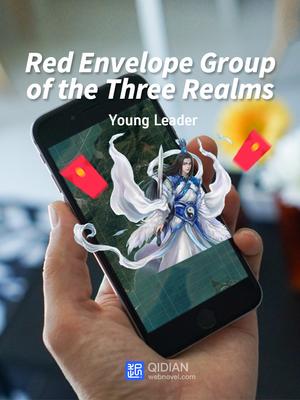
Red Envelope Group of the Three Realms
Chapter 1986 September 1, 2023 -
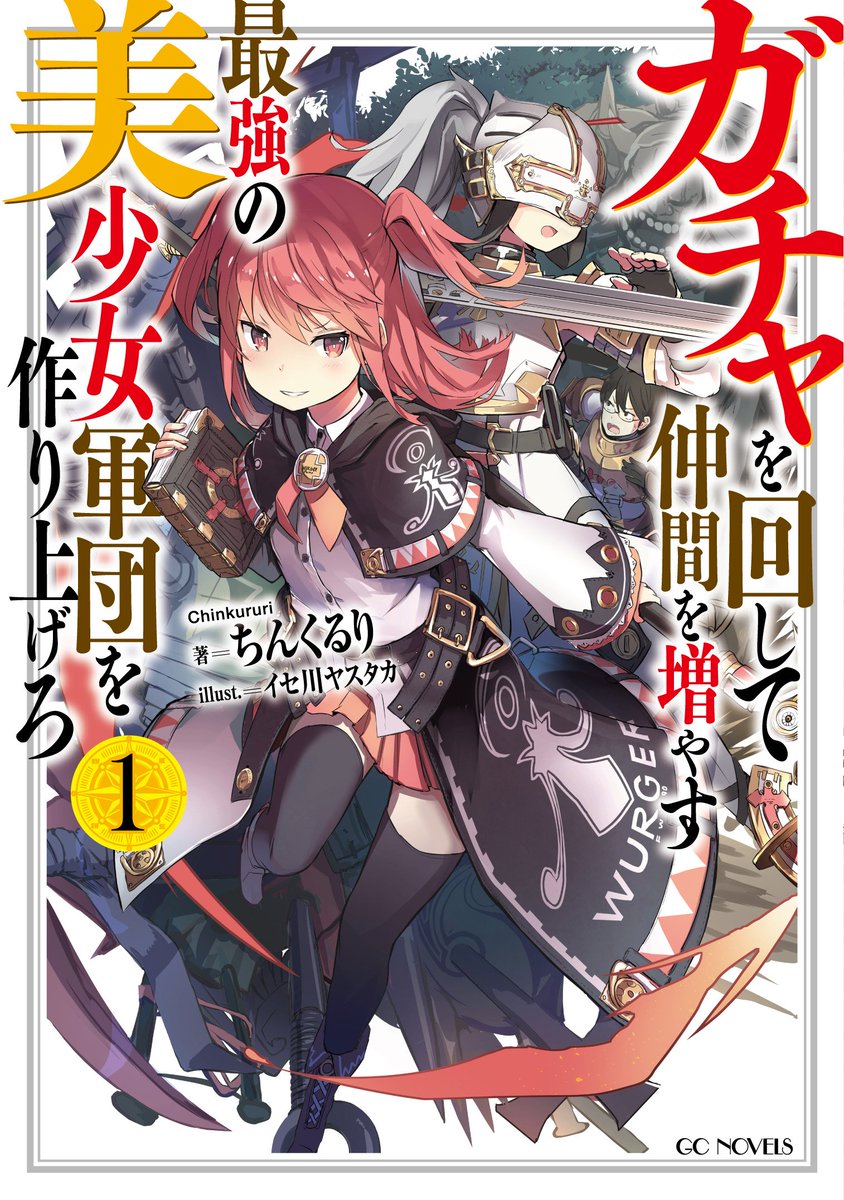
Using Gacha to Increase My Companions and to Create the Strongest Girls’ Army Corps
Chapter 84 August 28, 2023 -
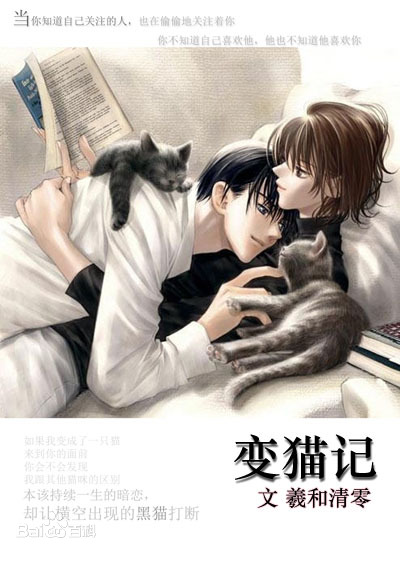
The Cat Transformation
Chapter 27 August 26, 2023 -
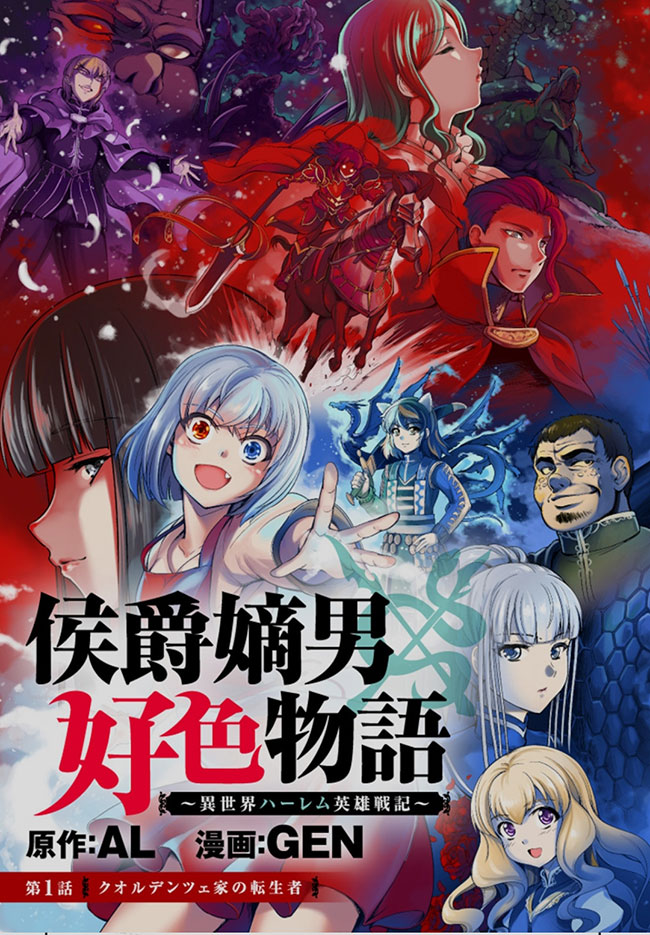
The Marquis’ Eldest Son’s Lascivious Story
Chapter 232 August 26, 2023 -
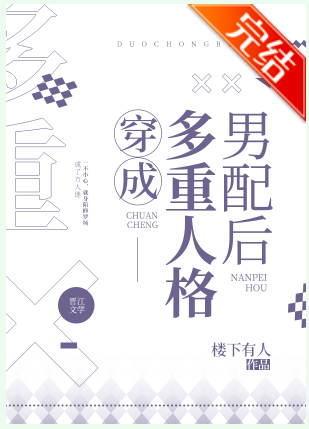
After Dressing as a Male Lead with Multiple Personalities
Chapter 14 August 11, 2023 -
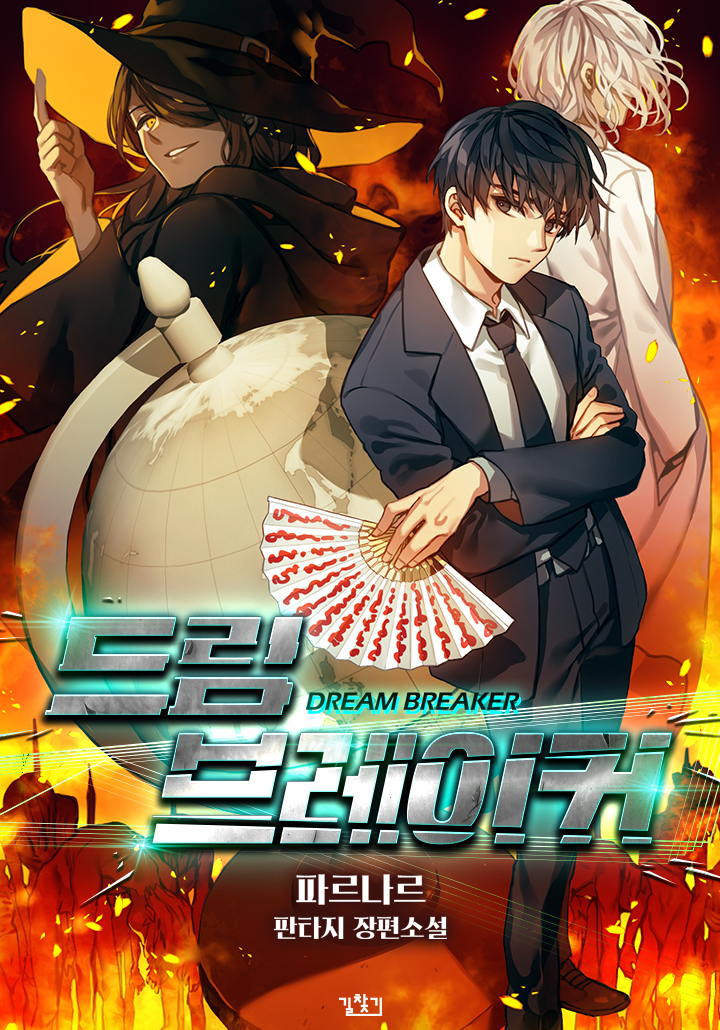
Dream Breaker
Chapter 33 August 8, 2023 -
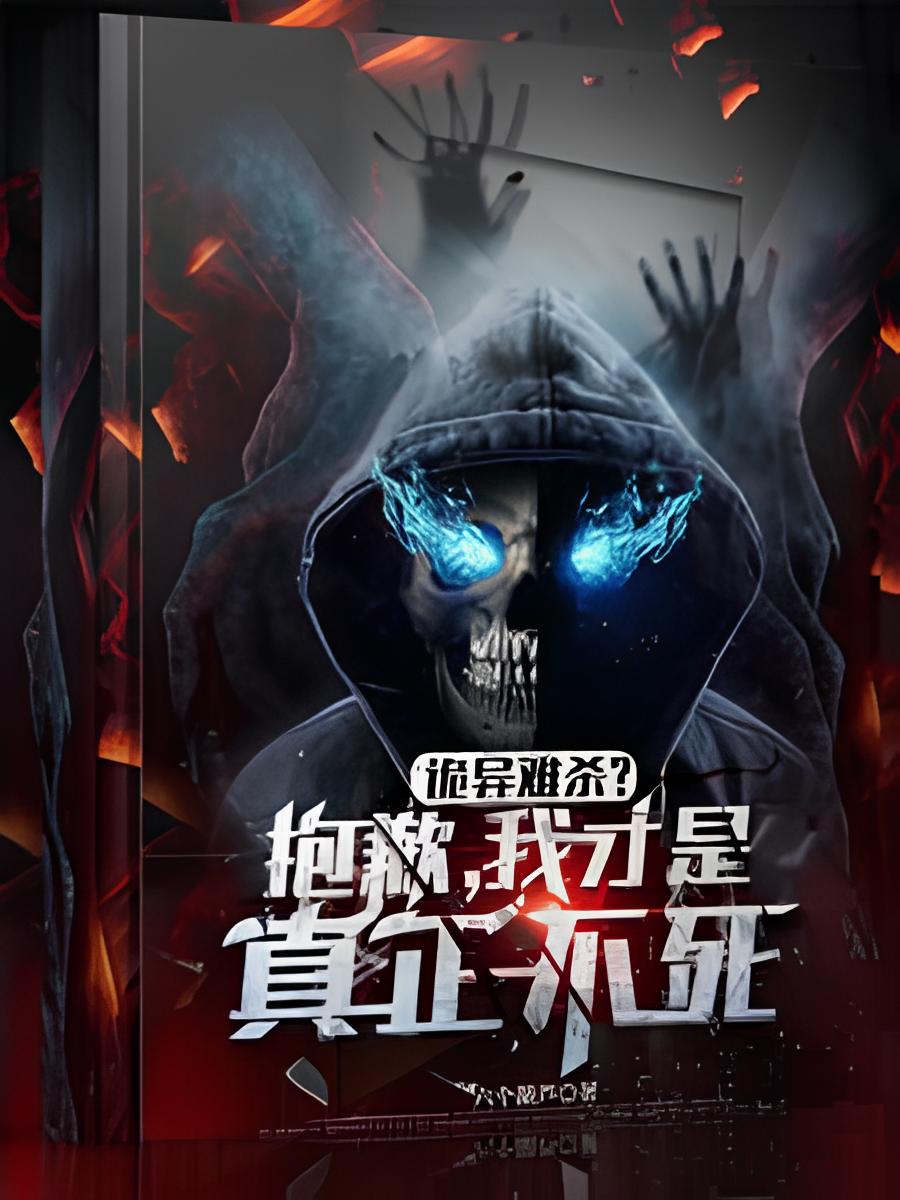
Die, Replay, Repeat
Chapter 2 August 8, 2023 -
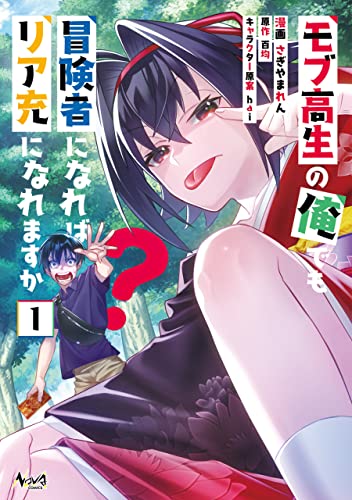
Can Even a Mob Highschooler Like Me be a Normie if I Become an Adventurer?
Chapter 24 August 7, 2023 -
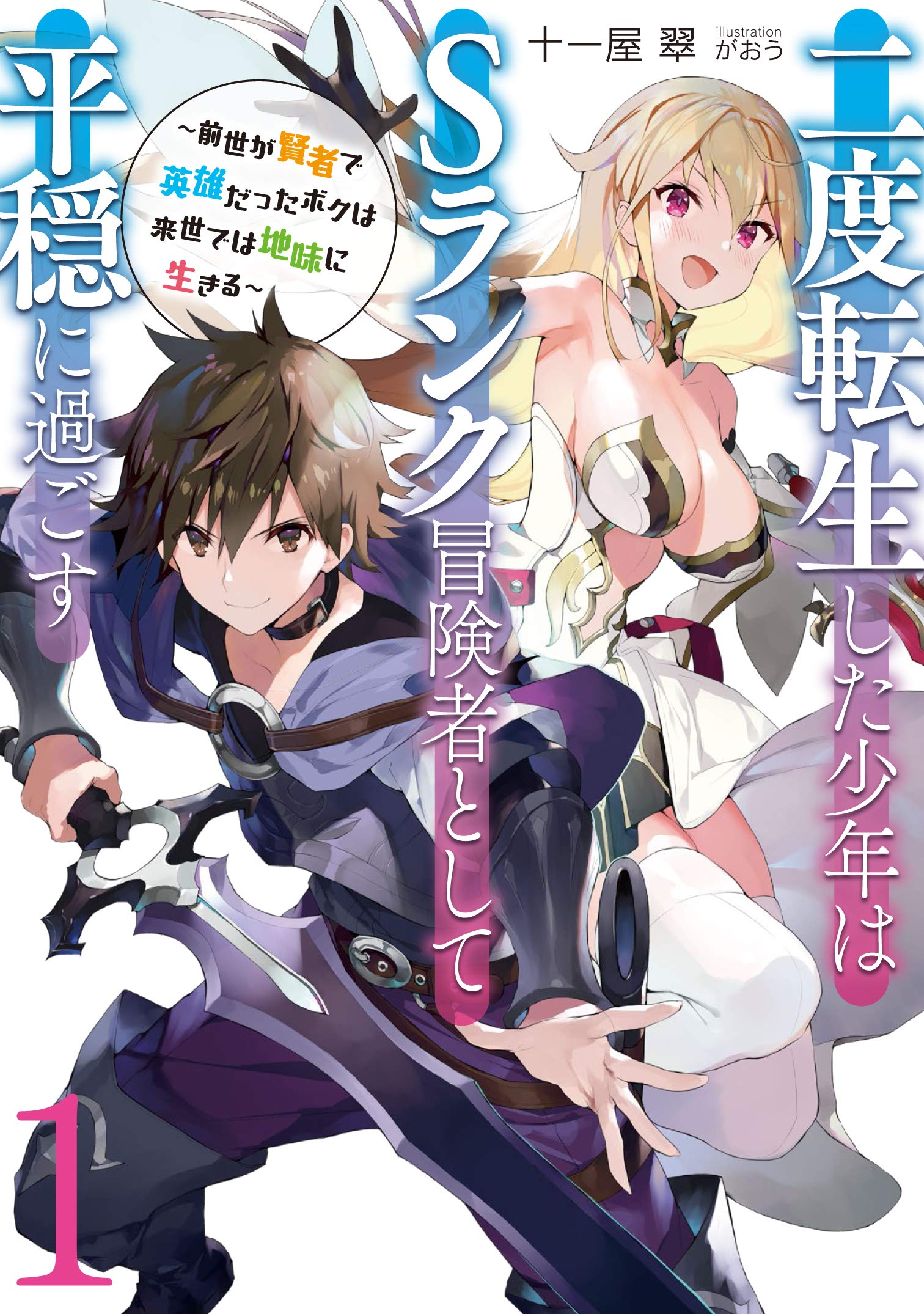
Nido Tensei Shita Shounen wa S-rank Boukensha Toshite Heion ni Sugosu ~ Zense ga Kenja de Eiyūdatta Boku wa Raisede wa Jimi ni Ikiru ~
Chapter 90 August 7, 2023 -
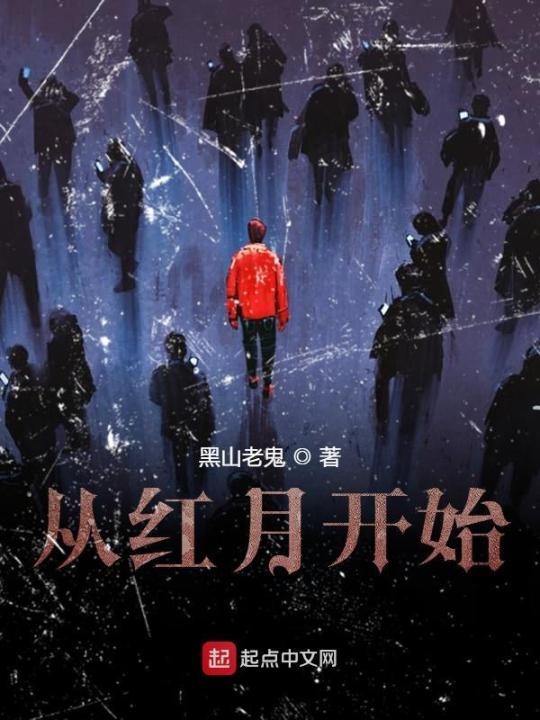
Since The Red Moon Appeared
Chapter 19 August 3, 2023 -
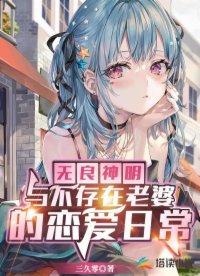
The Daily Love Life Of The Immoral God And His Invisible Wife
Chapter 111 August 2, 2023 -
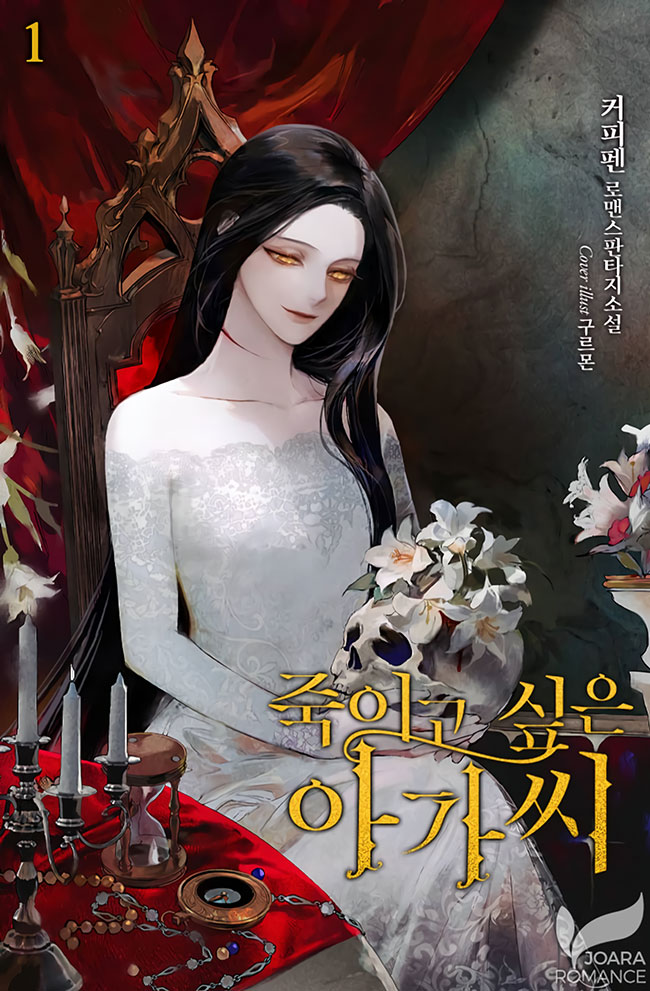
The Lady You Want to Kill
Chapter 18 August 1, 2023
